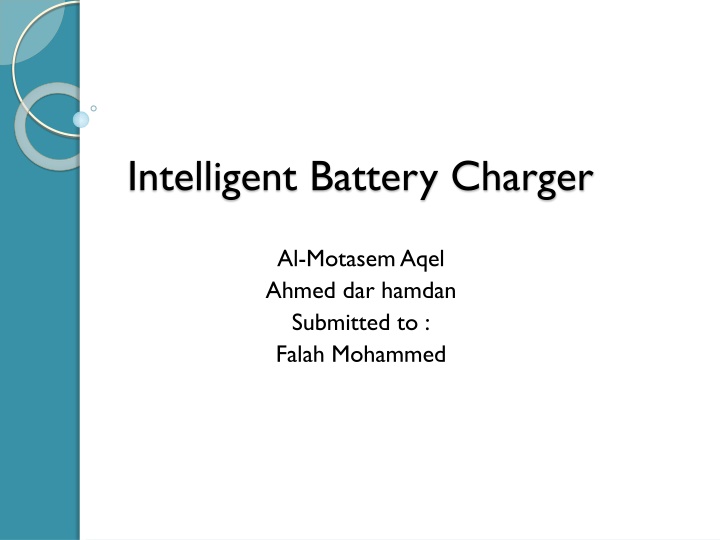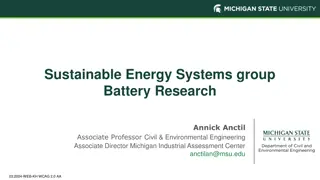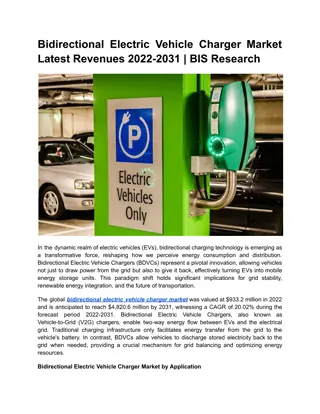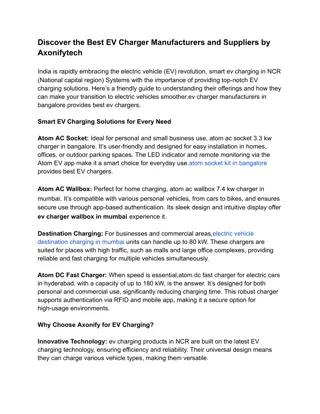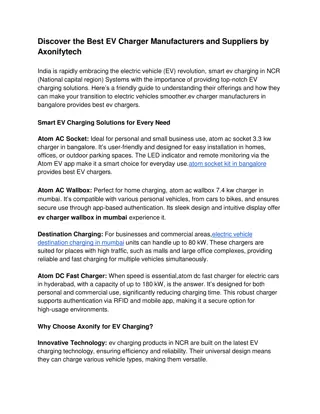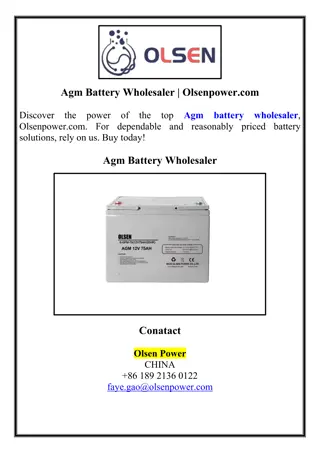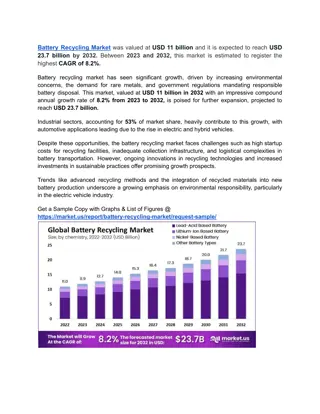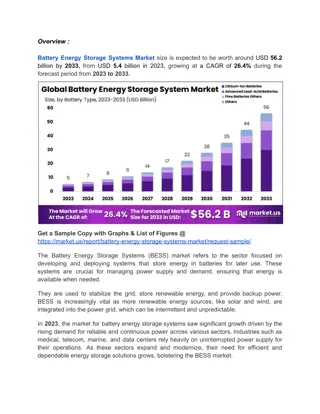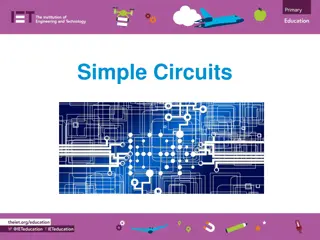Intelligent Battery Charger Circuit Design Overview
This presentation outlines the design requirements, challenges faced, and solutions implemented in the development of an intelligent battery charger. The initial design utilized separate circuits for different battery types, leading to complexity and limited control. The final design incorporated a buck converter and dynamic control for improved efficiency. Detailed insights into the AC-DC circuit, voltage supply, and buck converter design are provided, highlighting the progression from the original concept to the optimized solution.
Download Presentation

Please find below an Image/Link to download the presentation.
The content on the website is provided AS IS for your information and personal use only. It may not be sold, licensed, or shared on other websites without obtaining consent from the author.If you encounter any issues during the download, it is possible that the publisher has removed the file from their server.
You are allowed to download the files provided on this website for personal or commercial use, subject to the condition that they are used lawfully. All files are the property of their respective owners.
The content on the website is provided AS IS for your information and personal use only. It may not be sold, licensed, or shared on other websites without obtaining consent from the author.
E N D
Presentation Transcript
Intelligent Battery Charger Al-MotasemAqel Ahmed dar hamdan Submitted to : Falah Mohammed
Presentation Outline Introduction Circuit Design PIC Control Successes and Difficulties Future Work
Design Requirements ChargeAA NiMH, AAA NiCad, Li-Ion batteries according to charge algorithms Voltage and temperature charge termination Less than 5% battery voltage/current ripple LCD voltage display
Original Design Use a different circuit for each battery Utilize switches to switch between battery circuits, as well as different charging stages Problems with circuit size and complexity Not a very intelligent design that utilized very little PIC control
Final Design Added a buck converter PWM output of PIC controlled duty cycle of buck converter Control of battery current/voltage by varying duty cycle Dynamic control in place of the static circuit of original design
AC-DC Circuit 4:1 Step-down transformer Full-wave bridge rectifier Filter Capacitor
AC-DC waveforms After transformer
+5V Supply Was needed to power logic-level components : PIC, LCD, Oscillator Used a voltage divider on the rectified DC waveform to obtain 21V DC Used 7805CT +5V regulator to step down voltage
Buck Converter Design Inductor Design: L (Vin,max-Vout)x (Vout/Vin,max)x(1/fsw)x(1/(LIR x Iout,max)) For 1% ripple, Vin,max = 42 V , and Iout,max=3.5A, we obtain L 6.29 mH Output capacitor Design: C L(Iomax + I/2)^2 / (( V + Vo)^2 Vo^2) For 1% voltage and current ripple, we obtain C 44mF
PIC/Buck Converter Interface Varying duty cycle from PIC directly correlates to the voltage/current provided by buck converter MOSFET driver was necessary to supply enough current to drive the gate 20kHz PWM from PIC was consistent with switching limits of diode and was fast enough to keep ripple low
PIC Features 16F877A 40-PIN Built in PWM 6 Analog Pins 10-bit ADC Conversion FOX 1100E for 20MHz external clock Powered using +5V DC
PIC PWM Output PIC PWM output MIC4424CN PWM output
ADC Conversion PIC converts analog voltage to digital between 0 1023 (2^10) Actual Voltage = (5 0) 1023 x Raw Voltage ????+= +5V, ???? = 0 V Resolution = 0.004888 V/unit
Original Choice Low Side Driver Pros: Low side driver was easier to use and more readily available in the power lab Con: Had to ground drain side and therefore couldn t ground the negative terminal of battery. This made it much harder to measure battery voltage using PIC
Final Choice High Side Driver Pros: Allowed us to measure battery voltage with PIC, which was crucial to the project Cons: High side driver had a 9.5 V threshold for the PWM signal Required a low side driver acting as a voltage stepper to increase from 5 V to above 9.5 V Required extra 12 V and 15 V power supplies for the low side and high side drivers, respectively
LCD Panel PHICO Panel 16x2 LCD w/HD44780 Controller 4 Push Buttons 3 LEDs
Charging Algorithm Ni-MH: 1. Constant 1C =2.3 A - Fast charge until V >1.1V Constant 0.1 C = 0.23 A for 30 minutes Trickle 1/30 C = 7mA indefinitely Ni-Cd 1. Constant 1C =0.35 A fast charge until V >1.0 V 2. Constant 0.1 C = 3.5 mA for 30 minutes 3. Trickle 1/30 C = 1mA indefinitely Li-ion 1. If V<2.8 V, trickle charge at 0.1 C = 0.35 A 2. Constant 1C = 3.5 A until V=4.2 3. Constant 4.2 V supplied until I< .25 A 2. 3.
Constant Voltage For each charging stage, maintain a constant duty cycle This duty cycle is predetermined via testing to output a set voltage.
Constant Current Place a precision resistor in series with battery. Measure the voltage across this resistor Compare this to an expected voltage level, which is determined by multiplying the expected constant current value by the resistance of the precision resistor. For all measured voltages within 1% below the expected value, keep duty cycle constant For more than 1% below, increase the duty cycle by very small increments at each reading For voltages above the threshold, drop the duty cycle by 10%, as this will only occur when transitioning to a lower current stage.
Successes and Challenges Successes Measured battery voltage using PIC AC-DC conversion PIC-driven buck converter Challenges Inadequate testing equipment slowed our progress Driving the buck converter with high side configuration Overcoming time lost in following original design Temperature sensing
Future Work Fully developing and testing of charging algorithms Developing +15 V and +12 V sources within circuit Adding compatibility with other batteries Improving accuracy of PIC voltage reading Decrease overall circuit size and implement with PCB to improve accuracy Add temperature detection for better stage transitions and charge termination
